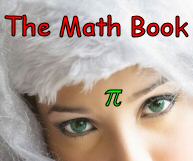Thursday, June 28, 2007
Death Yell
Monday, June 25, 2007
Psychedelics in popular culture
There exist many examples of Psychedelics in popular culture. The psychedelic experience has had a strong effect on many genres of popular music, and psychedelic drug references are common in movies, books, and in popular music.
DMT: The plot of the movie Blueberry (based on the comic Blueberry) touches Dimethyltryptamine practices of Native Americans.
LSD: Star Trek IV: The Voyage Home has a scene where Admiral Kirk tells a woman in 1986 that Spock did a little too much LDS in the 60's. The woman rolls her eyes at him. This was a reference to LSD, not The Church of Jesus Christ of Latter-day Saints. The Beatles song "Tomorrow Never Knows" is a musical take on Timothy Leary's analogy between the LSD experience and the passage from death through to reincarnation described in the Tibetan Book of the Dead. This article is licensed under the GNU Free Documentation License. It uses material from the Wikipedia article "Psychedelics in popular culture". This entry is a fragment of a larger work. Link may die if entry is finally removed or merged.
Friday, June 22, 2007
"Klaatu barada nikto"
The phrase "Klaatu barada nikto" originates from the 1951 Cold-War-era science fiction film The Day the Earth Stood Still. The phrase "Gort! Klaatu barada nikto!" was used to stop Gort, the robot in the film, from destroying the Earth. There is no known translation for the phrase, although "Klaatu" is the name of the humanoid alien protagonist in the film, and "nikto" is Russian for "nobody / no one." This article is licensed under the GNU Free Documentation License. It uses material from the Wikipedia article "Klaatu barada nikto". This entry is a fragment of a larger work. Link may die if entry is finally removed or merged.
Tuesday, June 19, 2007
Angela Beesley

Saturday, June 16, 2007
Obama Girl

Wednesday, June 13, 2007
Mass Vision

A mass vision is a phenomenon in which a large group of people, usually in physical proximity to each other, all experience the same unexplained phenomena simultaneously. It is similar but not identical to the Folie à deux phenomenon.
Famous mass visions: List of UFO sightings; The Miracle of the Sun -where 70,000 pilgrims at Fatima in Portugal in 1917 saw the sun "tear itsef from the heavens and come crashing down upon the multitude".
Richard Dawkins' addresses mass visions, specifically The Miracle of the Sun, in "The God Delusion". Whilst it's unlikely that 70,000 would all have the same vision, he says it's even less likely that what they "saw" really happened (because none of the rest of the world noticed). He cites David Hume's miracle test: "No testimony is sufficient to establish a miracle, unless the testimony be of such a kind, that its falsehood would be more miraculous than the fact which it endeavours to establish." With this, he shrugs off the mass visions. This article is licensed under the GNU Free Documentation License. It uses material from the Wikipedia article "Mass Vision". This entry is a fragment of a larger work. Link may die if entry is finally removed or merged.
Saturday, June 09, 2007
Chessckers

The rules of chessckers are simple as long as you understand both checkers and chess. Using a regulation chess/checker board, set up as shown above.Movement is very simple: all chess pieces move exactly as they would if one was playing chess.(i.e. Bishop diagonally, Rook up, down, left, or right, etc.) Also like in regulation, checker pieces move diagonally and, only if kinged, backwards diagonally. (To be kinged, a checker piece must move to the opposite side of the board.) You may not move your king into check. This article is licensed under the GNU Free Documentation License. It uses material from the Wikipedia article "Chessckers". This entry is a fragment of a larger work. Link may die if entry is finally removed or merged.
Wednesday, June 06, 2007
Space Ice Cream

Sunday, June 03, 2007
List of Iranian national heroes

Cyrus the Great, Founder of the Persian Empire
Darius the Great, Persian Emperor
Babak Khorramdin, Leader of the Persian resistance against Arab invaders
Hassan-i Sabbah
Ferdowsi, Savior of the Persian language, poet of Shahnameh epic.
Bahram Chobin, One of the greatest Eran Spahbods (generalissimo)
Rostam-e Dastan, legendary warrior from the Shahnameh
Arash the Archer, legendary warrior from the Shahnameh
Jamshid, One of the greatest kings of mythical Persia according to Shahnameh's account.
Kaveh the Blacksmith, character from the Shahnameh
Mohammad Mosaddegh, Nationalised Iran's oil industry
Amir Kabir, Politician and minister to Naser -o- Din Shah of Qajar Dynasty.
Nader Shah, Military leader and Shah of Iran, rightfully dubbed as Napoleon of Persia.
Takhti, Great Persian wrestler.
Surena or Suren Pahlav, were among the prominent ruling clans during the Parthian Empire. Eran Spahbod Rostaham Suren Pahlav was a member of this house who managed to decisively defeat Roman Army under command of Crassus at the Battle of Carrhae.
Abbas Mirza, able crown prince of Qajar Dynasty who lead a number of albeit unfruitful military campaigns against Impersial Russia.
Abu Muslim Khorasani.
Bagher Khan
Shirin Ebadi, Nobel peace prize winner
Mirza Kuchak Khan, Activist
Mohammad Khiabani
Pourya-ye Vali
Sattar Khan
Shah Abbas the Great
Ya'qub bin Laith as-Saffar
Hossein Fatemi
Reza Shah, Founder of the Pahlavi Dynasty
This article is licensed under the GNU Free Documentation License. It uses material from the Wikipedia article "List of Iranian national heroes". This entry is a fragment of a larger work. Link may die if entry is finally removed or merged.
 The Wikipedia Knowledge Dump (WikiDumper.org)
The Wikipedia Knowledge Dump (WikiDumper.org)

